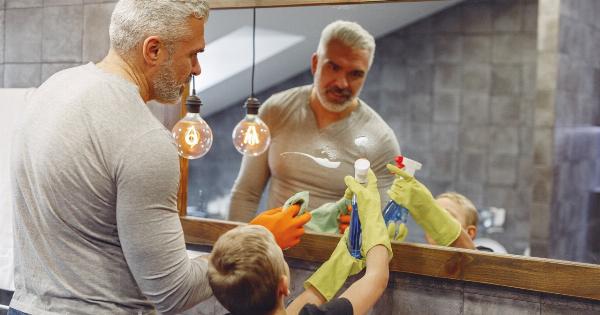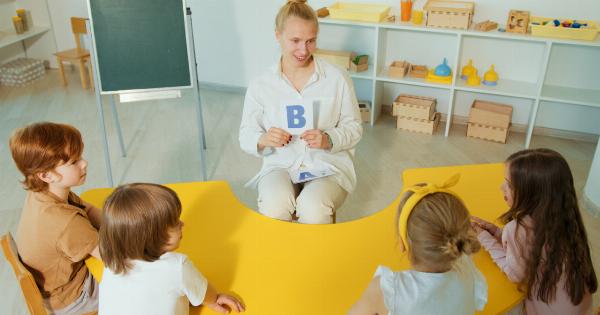One of the most debated topics among parents and caregivers is whether or not to supervise a child’s every move during playtime.
Some parents feel the need to be constantly present to ensure their child’s safety, while others believe in giving their child independence to explore and learn on their own. In this article, we will delve into the advantages and disadvantages of both sides to determine the best approach.
The Advantages of Supervising a Child’s Playtime
One of the main advantages of supervising a child’s playtime is the increased level of safety. Children are curious and impulsive, and may not always recognize potential hazards in their surroundings.
By being present and watching over them, parents can intervene if they see their child putting themselves in danger.
Another advantage of supervision is the opportunity for parents to bond with their child. Spending time together during playtime can strengthen the parent-child relationship and allow for quality time to be spent together.
Supervision also allows for parents to guide their child’s play and set appropriate boundaries. By providing guidance and structure, parents can ensure their child is playing in a productive and safe way.
The Disadvantages of Supervising a Child’s Playtime
One of the main disadvantages of supervising a child’s playtime is the reduction in a child’s independence. If a child is always being told what to do, they may struggle to develop their own ideas and creativity.
They may also become overly reliant on their parent’s guidance and struggle to make decisions on their own.
Another disadvantage is the potential for helicopter parenting, where parents are overly involved in their child’s life. This can lead to children feeling suffocated and may even harm the parent-child relationship in the long run.
Children need to be able to develop their own sense of agency and autonomy, which can only be achieved if they are given the space to explore and make their own decisions.
Finally, over-supervising a child’s playtime can be time-consuming for parents. They may feel like they’re always on high alert, which can be exhausting and stressful.
The Advantages of Allowing a Child to Play Independently
One of the main advantages of allowing a child to play independently is that it promotes creativity and self-directed learning. Children are naturally curious and allowing them to explore their environment on their own can help foster their imagination.
They can also learn valuable problem-solving skills by figuring things out on their own.
Allowing a child to play independently also helps build their sense of independence. They will begin to feel more confident in their ability to make decisions and navigate their surroundings.
This can be incredibly empowering and will benefit them in the future as they continue to grow and develop.
Finally, allowing a child to play independently can be beneficial for parents as well. It allows them to have some much-needed time to themselves to take care of other responsibilities or simply unwind for a little while.
The Disadvantages of Allowing a Child to Play Independently
One of the main disadvantages of allowing a child to play independently is the increased risk of injury. Without supervision, children may not recognize the potential dangers in their environment and can get hurt.
This can be particularly worrisome if a child is playing in an area with access to hazardous materials or equipment.
Another disadvantage is the potential for inappropriate behavior. Without supervision, children may engage in behavior that is not appropriate or safe.
They may also struggle to regulate their emotions and may lash out at others or engage in other negative behaviors.
Finally, allowing a child to play independently may be difficult for parents who struggle with anxiety or fear. It can be hard to give up control and trust that their child will be safe without them constantly watching over them.
The Best Approach
So, what is the best approach to supervising a child’s playtime? The answer is not straightforward and will vary depending on the child and the situation.
However, it is generally recommended that parents strive to find a balance between supervision and independence. This means being present and watching over their child when necessary, but also allowing them to explore and play on their own.
Parents can start by setting clear boundaries and guidelines for playtime. This can include limiting the areas their child is allowed to play, establishing rules around sharing and cooperation, and setting expectations around behavior.
By doing this, parents can help ensure their child is playing in a safe and productive way.
It’s also important for parents to be aware of their child’s individual needs and preferences. Some children may need more guidance and supervision than others, while others may thrive when given more independence.
Parents should pay attention to their child’s behavior and adjust their level of supervision accordingly.
Finally, parents should strive to be present and engaged during their child’s playtime, whether they are supervising or allowing their child to play independently.
This means putting away distractions such as phones and tablets and focusing on spending quality time with their child.
Conclusion
The decision to supervise a child’s playtime is a complex one that requires careful consideration.
Ultimately, the best approach is one that strikes a balance between supervision and independence, allowing children to explore and learn while also ensuring their safety. By being present and engaged during playtime, parents can help foster a strong bond with their child and set them up for success in the future.






























